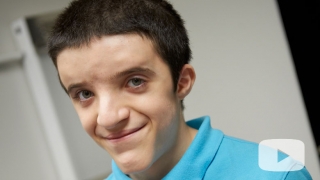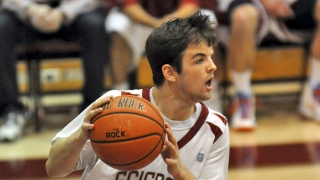Stickler Syndrome
What is Stickler syndrome
Stickler syndrome is an autosomal dominant collagenopathy that can lead to abnormal facial features, including a flattened face; vision problems; a cleft palate; a small lower jaw; hearing loss; and joint problems such as arthritis. Stickler syndrome can range from mild, in which there are no manifestations of the syndrome, to severe, in which all organ systems are involved.
The cleft palate and small lower jaw can lead to tongue-based obstruction (TBO) in which the tongue fully or partly blocks your child’s airway. Though there are varying degrees of tongue-based obstructions, all can cause significant breathing and feeding issues. The Pierre Robin sequence, which consists of small lower jaw, cleft palate, and tongue-based obstruction, is often applied to Stickler syndrome.
Causes of Stickler syndrome
Mutations in genes that code for collagen type II and type XI cause Stickler syndrome. Collagens are the building blocks of the body, providing structure and strength to connective tissue that makes up joints and organs. Defective collagen molecules or reduced amounts of collagen affect the development of bones and other connective tissues, leading to the characteristic features of Stickler syndrome.
Stickler syndrome is an autosomal dominant genetic disorder which means that affected individuals have a 50 percent chance of passing along the syndrome.
Symptoms
Children with Stickler syndrome may have difficulty breathing in infancy due to tongue-based obstruction secondary to a cleft palate and small lower jaw. Many children have near-sightedness (myopia) and require glasses. Some children will also have abnormal hearing. Overly flexible joints are another hallmark of Stickler syndrome, and some individuals may develop arthritis at an early age. The presence of a cleft palate may lead to difficulties with feeding and speech.
Many children with Stickler syndrome also have skeletal abnormalities, including spine issues such as scoliosis or kyphosis.
Evaluation and diagnosis
When Stickler syndrome is suspected, we recommend that your child be evaluated by a multidisciplinary team of specialists who may be involved in your child’s care, including plastic surgeons, otolaryngologists (ear, nose and throat or ENT experts), audiologists, geneticists, ophthalmologists, rheumatologists and feeding specialists.
Treatment
Because of the variable presentation of Stickler syndrome, many different medical specialists may be involved in your child’s care and management will be tailored to each individual’s symptoms.
Initial treatment often revolves around airway concerns, feeding, vision and hearing.
In more mild cases, airway management may consist of conservative positioning in a cranial side position or the addition of a nasopharyngeal airway until your child matures neurologically and has grown enough to bring the tongue into a more favorable position.
In patients who are more severely affected, surgical alternatives can be considered. Surgical intervention may include tongue-lip adhesion, mandibular distraction osteogenesis or tracheostomy. Plastic surgeons may fix a cleft palate or offer treatment for tongue-based airway obstruction.
Airway concerns and cleft palate may lead to feeding difficulties. Feeding consultants can help your baby feed by mouth through positioning and special bottles and nipples. If oral feeding is not possible, a feeding tube may be required, at least in the short term.
Stickler syndrome causes myopia because of the shape of the eye. Patients with eye involvement are also prone to increased pressure within the eye, which may lead to glaucoma or retinal detachment. As a result, regular appointments with a specialized ophthalmologist are advised. Ophthalmologists evaluate your child’s vision and monitor for the development of glaucoma.
Hearing loss, especially if undetected, can significantly impair your infant’s ability to interact with her environment. Early detection of hearing difficulties is critical to ensuring a supportive educational environment. Audiologists and ENT specialists evaluate for hearing loss.
At The Children’s Hospital of Philadelphia, children with Stickler syndrome have access to coordinated care through the Craniofacial Program, the Neonatal Airway Program and the Center for Pediatric Airway Disorders.
Long-term outlook
The long-term outlook for Stickler syndrome is generally positive, as long as its manifestations are recognized early and effectively treated. Our multidisciplinary team of specialists who are experienced in caring for children with Stickler syndrome has an excellent track record of success in the long-term.
Why choose us
The multidisciplinary team at CHOP is world-renowned for advancing the understanding and management of Stickler syndrome. Our team of experts cares about your child and has access to the most up-to-date diagnostic and treatment modalities.
Reviewed by: Jesse Taylor, MD
May 2014
Reviewed by Jesse A. Taylor, MD

